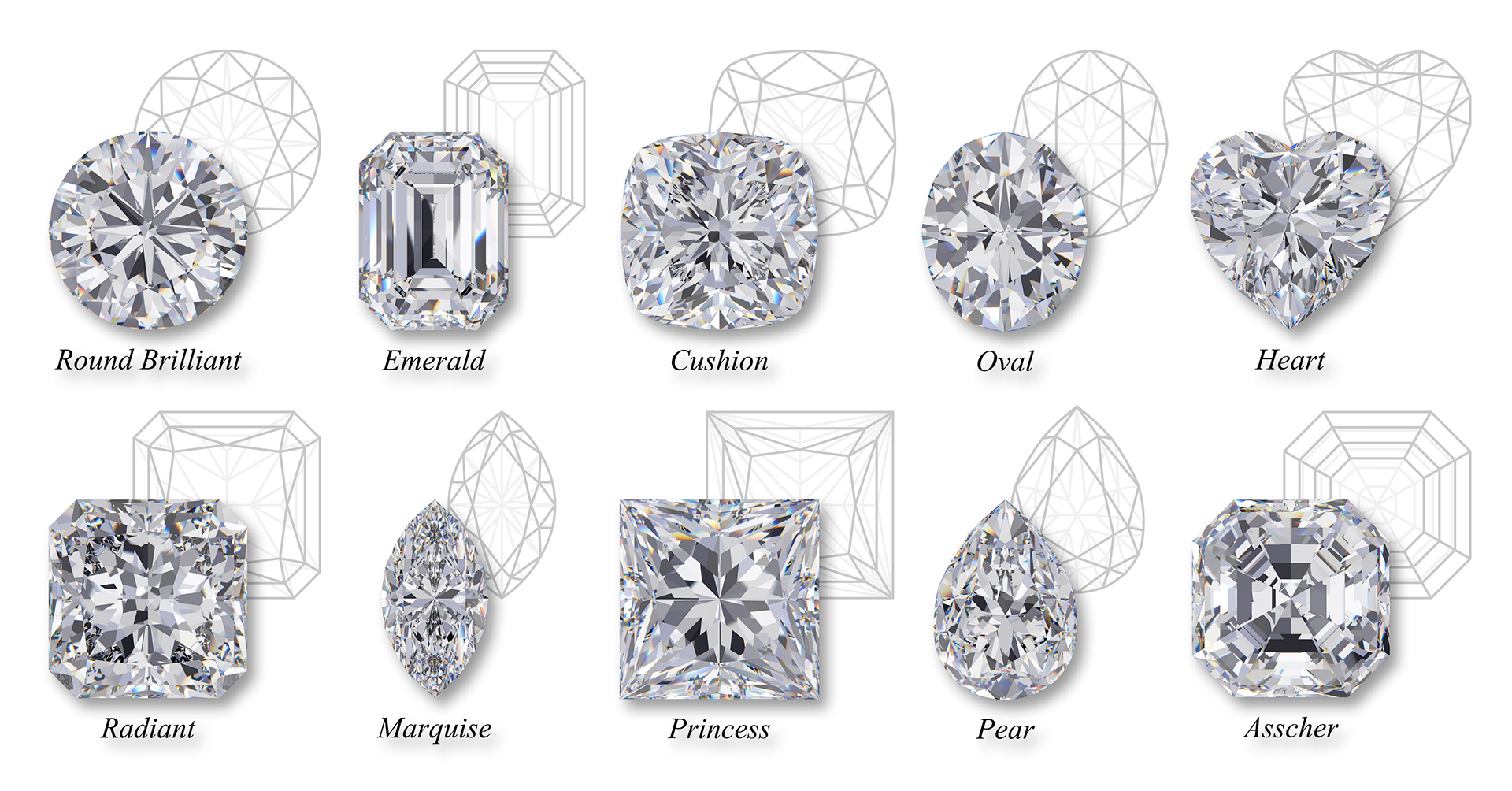
Diamond Buying Guide
Whether you are searching for the perfect diamond for your engagement ring or choosing a setting for an heirloom diamond, it’s important to understand the essential qualities that determine a diamond’s value.
The 4Cs Of Diamonds
You may have heard of the 4Cs of diamond quality, a globally accepted standard for describing diamonds created by the Gemological Institute of America®. The qualities of cut, colour, clarity, and carat weight contribute to the overall value and beauty of a diamond. Combine the 4Cs of diamond quality with your own visual preferences to find the diamond of your dreams.
Diamond Cut
A diamond’s symmetry, proportions, and faceting determines how much light reflects out from the stone. In other words, cut creates brilliance, fire, and scintillation. Each of these dimensions combine to determine its beauty and price as cut has the greatest influence over a diamond’s ability to sparkle.
Diamond Colour
Diamond colour measures the absence of colour in a particular diamond using the GIA® D-to-Z grading system*, where D refers to colourless and Z refers to yellow. The most popular preferences are colourless (D E F) or near colourless (G H I).
These diamond colour distinctions are very subtle until J and lower on the scale. They are invisible to the untrained eye. However, these distinctions make a difference in diamond quality and price. Hence, it is important to get a qualified expert’s opinion in evaluating the best colour for your diamond.
*Fancy-coloured diamonds are graded using a different grading system.
Diamond Clarity
To understand diamond clarity, we must first understand how diamonds are created. Natural diamonds are the result of carbon exposed to tremendous heat and pressure deep in the earth for millions, sometimes billions of years. This process can result in a variety of internal characteristics called inclusions.
A diamond’s clarity is graded on a scale of flawless (FL) to included (I1, I2, I3). Inclusions make each diamond unique however, can impact the look and strength of a diamond.
Diamond Carat Weight
The carat of a diamond refers to its metric carat weight. One carat is equal to 0.2 grams. Carat is not to be confused with karat, which measures metal purity. Larger diamonds are more rare. The price increases exponentially the higher the carat weight.
While the 4Cs are the most important factors when choosing a diamond, we know selecting a diamond for engagement rings can be very personal, so we’ve included a 5th C to make sure you are aware of all of your options to consider.
Diamond Choice
Since their discovery, diamonds have had a lasting impression on people for centuries. Diamonds are one of the most exquisite things crafted by nature. They conjure up feelings of romance and opulence and in our modern day you now have choice as to how your diamond is grown.
Laboratory grown diamonds are grown using highly advanced technological processes that duplicate the conditions under which diamonds naturally develop beneath the Earth’s crust. These lab created diamonds are grown from the tiny carbon seeds of pre-existing natural mined diamonds. Since they are made of the same material as natural diamonds, they exhibit the same optical and chemical properties along with the same fire, scintillation, and sparkle. A laboratory grown diamond can only be distinguished from natural diamonds using specialized equipment that can detect the minor differences in trace elements and crystal growth. In other words, the only difference between a laboratory grown diamond and a natural mined diamond is one is formed in a lab and one is formed in nature; just like ice being formed in freezer rather than outdoors.
Natural diamonds still possess the upper hand in many areas. Recognized as the most precious stone around the world, they make the perfect engagement ring by being a symbol of love and commitment. In terms of value, natural diamonds are a better investment. While they may cost more to buy compared to their lab grown counterpart, they also have a better value in the market both for possession purposes as well as in terms of intrinsic value.
Naturally mined diamonds also are unique because each stone has a different origin, story, and history. Every natural diamond is different from the other, like a snowflake or a fingerprint.
Contact us and our professional, experienced team will assist you further in your diamond buying process.

